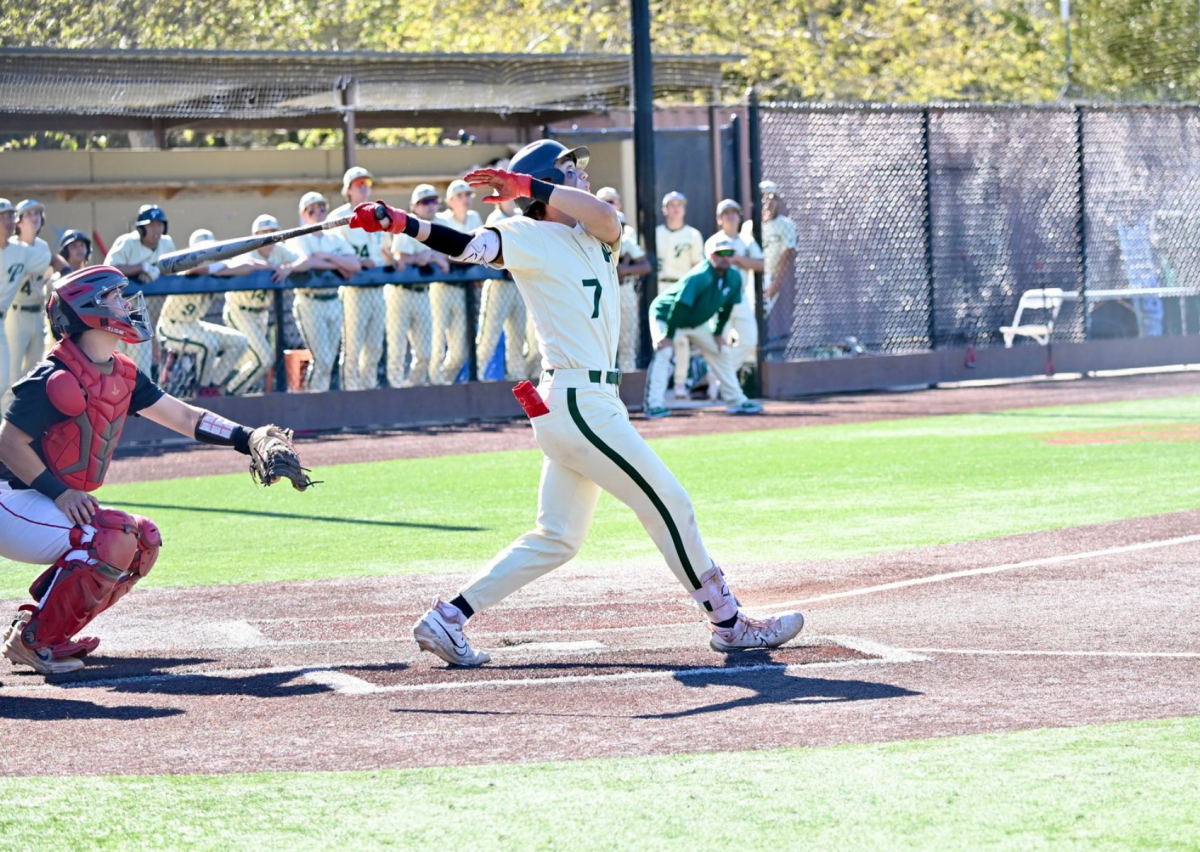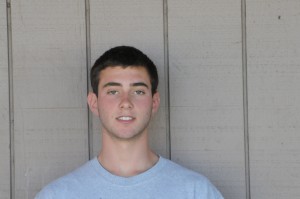Caffeine-packed, the freshly brewed cup of java continues to jump-start sleep-deprived citizens with a temporary boost of energy. Day in and day out, they wake up with the luxury of knowing that their consistent five hours of sleep will not hold them back; at 5:30 a.m. the coffee machine is on the grind and the illusion of fatigue is out the door. By cramming extensive hours into an already tight workday, they brush aside necessary, consistent and wholesome sleep. The common perception is that pushing it to the limit can only make one stronger – the problem comes when disregarding the limit becomes a habit.
At Palo Alto High School, students are well aware that time is of the essence. It is the hardly manageable aspect of students’ lives that may put a cap on daylight, but certainly not on their schedules. Between shuffling through classes, managing a hefty work-load, handling social life and eating sometime between, students, and let alone student-athletes, can barely muster the energy to flop out of bed, after having had a routine five hours of sleep.
“If I’m lucky, between four and a half hours of practice in the morning and a stack of work at night, I manage five to seven hours of sleep daily,” Palo Alto varsity and Stanford Aquatics swimmer Sabrina Lee (‘11) said.
To cram her extensive activities and commitments into the average school day, Lee wakes up at 4:30 a.m. to attend first club and then school swim training. By the nature of her schedule, Lee finds no time to utilize her first period prep in the same way that the majority of students do; to sleep. For Lee, after intense cardio and weight-lifting training, the 7:50 a.m. bell calls for study hall rather than a much needed rest.
“Immediately after a workout, it’s hard [to go back to sleep] because I’m so awake and energetic from exercising,” Lee said. “I have to do something like homework or reading to bring my heart rate down to make me sleepy.”
Academics alone are a stressful load on the body and brain. When mixed with the demand for muscle repair and maximized functionality that are implicit in high-school sports, the body simply needs more sleep to regenerate and repair. After a period of extended wakefulness or reduced sleep, neurons in the brain begin to malfunction, visibly affecting a person’s behavior. Under the pressure of school, Lee finds that a lack of sleep weakens her physically and creates an irritable temperament, causing difficulty in her ability to focus.
“It’s much more difficult to comprehend my schoolwork,” Lee said. “It’s literally hard to keep my eyes open and taking notes is less productive because I just copy them and don’t absorb what I’m reading.”
While the concept that lack of sleep can affect behavior is widely accepted, Dr. Mary Carskadon, Ph.D at the Bradley Hasbro Children’s Research Center, suggests that insufficient sleep can also directly and negatively impact productivity and performance of a teen athlete. Beyond a grumpy disposition, lack of sleep can significantly affect a student athlete’s performance through muscle fatigue, decrease in attention and poor frontal-lobe function, which controls decision-making abilities. Nevertheless, Lee feels that academic stress affects her athletic performance more than sleep, but recognizes that both are debilitating factors.
“I think that stress from school affects my swimming more than sleep,” Lee said. “But without sleep, it’s really hard to get warmed up and ready for a race because I feel sluggish and unprepared.”
While the effects of sleep may differ between individuals, Dr. Kushida, Ph.D at Stanford’s Sleep Medicine Clinic, believes that teen athletes need at least eight hours of sleep, however, ten hours would be ideal to sustain optimal performance. For Lee’s demanding schedule, the doctor’s orders are nothing more than wishful thinking. Without consistent sleep, Lee’s sustained energy remains unfounded within the medical community. Regardless of science, she believes that her dedication to her demanding routine has allowed her to adjust more readily to the difficult hours.
“By sticking to my regular routine for morning practices, I’m able to maintain my health, strength and academic responsibilities because I know what to expect,” Lee said.
Furthermore, Lee finds that her mental awareness and physical ability increases immediately after a workout. Dr. Kushida attributes this to a rise in endorphins released during and following her workout.
“My energy levels definitely start out high and I’m more awake and ready to work,” Lee said. “But, as the day goes on it slowly declines and then picks back up right before my second practice after school.”
By the end of a full day in the pool and the classroom, Lee manages to complete her homework before jumping under the covers to restart the cycle. While Lee does not find it difficult to complete her homework after an intense practice in the morning and a light sleep the night before, she recognizes that her workout in the morning helps her fall asleep quicker and sleep deeper that night.
“After a workout and homework and such, I am totally ready for bed,” Lee said. “It takes like five minutes to actually fall asleep.”
Be that as it may, Lee’s ability to adapt to minimal sleep is abnormal for the average teen athlete. For NorCal Crew rower Laura Jalalian (‘11), rowing on five hours of sleep does not fly.
“When I don’t have sleep it takes a while for me to start getting alert and stay focused on what workout we are doing,” Jalalian said. “It’s the mental aspect that affects my performance the most.”
Like Lee, Jalalian balances her schoolwork with demanding morning practices, but has the advantage of having both a first and second prep, and morning practices only on Monday, Tuesday and Saturday. After training in the morning, Jalalian plays catch-up with her homework from the night before. Although the morning preps allow Jalalian to work productively at the time, by mid-afternoon, her early start delivers an all too familiar crash-the crash from accumulated sleep debt.
“At first [after morning practice], I feel like it [morning practice] wasn’t so bad, but then a couple of classes later, I start to collapse,” Jalalian said. “After lunch is when I start to fall asleep in classes and can’t keep my eyes open. Really, I just become inattentive and careless.”
Sometimes overwhelmed by drowsiness and fatigue during the day, Jalalian tries to make up for her lack of sleep with a refreshing glass of green tea. However, when green tea does not pack enough punch to liven up her day, she resorts to using a comforting desk as her pillow during class. Afternoon naps are just as much a part of her everyday schedule as going to in which she takes them.
“I take naps whenever I can,” Jalalian said. “Sometimes I find myself sleeping so much longer, and falling asleep in random places; usually five times a week.”
A nap or two in class, however, is the least of her concerns. During morning practices, Jalalian’s early start breaks down her mental awareness to the point that it prevents her from improving her performance and can cause her serious injury during her workout. By the nature of crew, a poor performance by one rower in the boat will lower the overall execution by the team.
“When I come to regattas or practices without enough rest I tend to miss my calls from the coxswain,” Jalalian said. “Because I don’t perform my best in the boat, especially on courses like the 2K, I let my whole team down and we can’t break times.”
While Jalalian recognizes that when rowing on minimal sleep she is not mentally prepared to react to critical communications, she also notices that reduced sleep affects her physically, to the point that she becomes increasingly weaker over time.
“Sometimes in the mornings I have to skip out on weight training because I simply can’t do what I should be able to,” Jalalian said. “I find myself just lying down on the mats, resting and slowly losing my strength.”
Without sleep, improving her performance becomes an increasingly difficult task. At the end of the day, in order to get stronger, Jalalian needs to sticks to her workout routine and trains relentlessly when ever the opportunity arises. There is a point, however, where training under sleep-deprived conditions sets a dangerous precedent. The body requires a certain amount of sleep to promote muscle growth and repair. When that need is not met, the body is susceptible to serious injury. Jalalian experienced such injury while lifting this past year.
“I came to morning practice incredibly tired after a long night of homework and I knew I had some lifting to do if I wanted to stick to my routine and improve my strength,” Jalalian said. “I remember for one second I was holding the bar on my shoulders, and the next second my teammates were running over to lift it off of me after it drove me to the ground.”
Consequently, Jalalian’s weight lifting incident tweaked her back and prevented her from training and competing for two weeks.
Like most athletes, whether at the high school, collegiate or professional level, Jalalian maintains an attitude toward training that pushes her to exercise consistently and tirelessly, always aiming to improve. Unfortunately, pushing the limit is not always the key to success and in light of an injury can in fact prevent improvement following the damage. While it is essential to maintain consistency in an athlete’s training routine, vigorous conditioning coupled with a lack of sleep is likely to hinder athletes from improving their performance, both in the moment and down the line.






